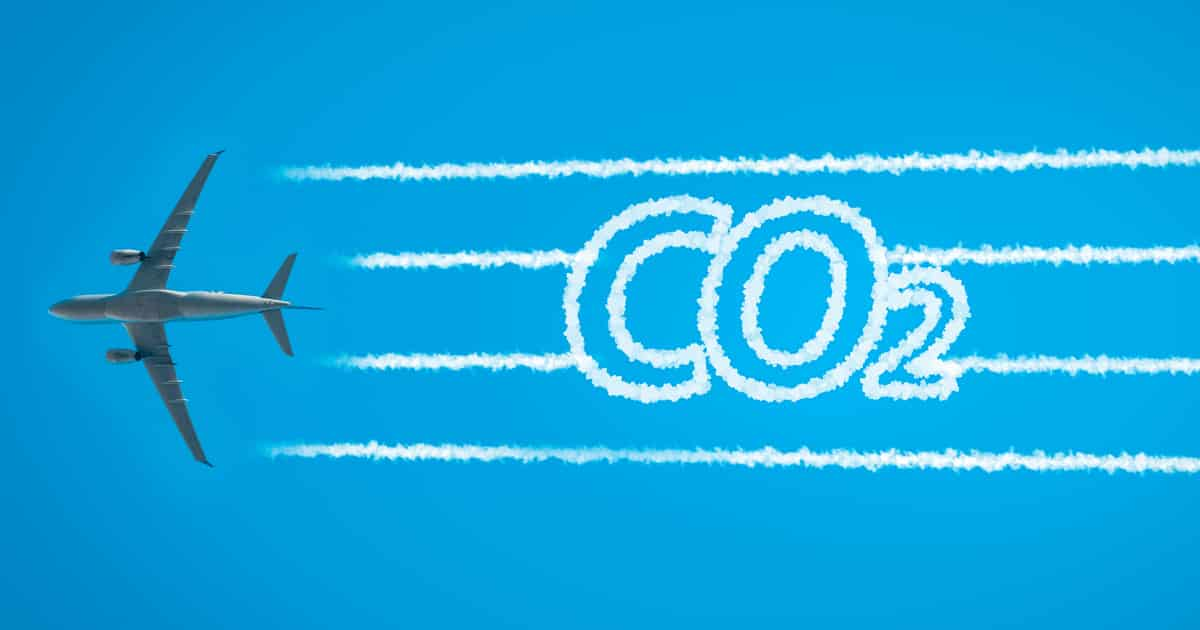Carbon offsetting alone is insufficient to achieve meaningful aviation decarbonization. While offsets serve as a transitional tool, true sustainability demands a comprehensive approach combining sustainable aviation fuels (SAF), next-generation aircraft technologies, operational efficiency improvements, and critically—demand management policies to address aviation’s growing climate impact.
The Offsetting Paradox
Carbon offsetting has emerged as aviation’s go-to solution for climate responsibility, with the industry-wide Carbon Offsetting and Reduction Scheme for International Aviation (CORSIA) mandating offset purchases for emissions growth above 2019 levels. However, this approach faces fundamental limitations that undermine its effectiveness as a standalone solution.
The Mathematical Challenge
Aviation emissions are projected to double by 2050 as passenger demand reaches an estimated 10 billion travelers. Even with CORSIA’s projected mitigation of 2.5 billion tonnes of CO₂ between 2021-2035, the scale of required offsetting would quickly outstrip the availability of credible projects.
Research indicates that achieving sufficient biofuel supply for UK aviation alone would require half of Britain’s farming land, highlighting the impossible scale of resource competition between offsetting projects and essential food production.
Quality and Additionality Concerns
The Science-Based Targets initiative (SBTi) recently concluded that “various types of carbon credits are ineffective” with “clear risks to corporate use of carbon credits for offsetting”. Key concerns include:
- Non-additional projects that would have occurred without offset funding
- Permanence risks from forest fires, political instability, or land-use changes
- Leakage effects where protection in one area leads to deforestation elsewhere
- Time-lag issues as tree growth takes decades while flight emissions are immediate
The Non-CO₂ Problem
Aviation’s climate impact extends far beyond direct CO₂ emissions through radiative forcing effects that nearly double aviation’s warming impact. These include contrails, nitrogen oxides, and high-altitude water vapor—effects that carbon offsets cannot address.
When Air New Zealand recently abandoned its 2030 emissions target and withdrew from SBTi, CEO Greg Foran cited how “so many levers needed to meet the target are outside our control”—highlighting the limitations of offset-dependent strategies in achieving real decarbonization.
Beyond Offsets: The Multi-Pronged Solution
Sustainable Aviation Fuels: The Near-Term Game Changer
SAF represents the most promising pathway to meaningful emission reductions, offering up to 80% lifecycle CO₂ reduction compared to fossil jet fuel. Major developments include:
- Production scaling: Global SAF production is set to double in 2025
- Mandate implementation: EU requiring 2% SAF blend by 2025, rising to 70% by 2050
- Industry commitments: Half of global airlines plan SAF sourcing by 2026
However, SAF currently represents only 0.2% of total aviation fuel use, with high costs and limited feedstock availability constraining rapid scaling.
Revolutionary Aircraft Technologies
Hydrogen Aviation: The Long-Term Vision
Companies like Airbus with its ZEROe project target the first commercial hydrogen aircraft by 2035. Hydrogen offers compelling advantages:
- Zero direct CO₂ emissions during combustion or fuel cell operation
- Higher energy density than batteries, enabling longer ranges
- Weight advantages: Hydrogen is one-third the weight of jet fuel, potentially reducing fuel consumption by 15%
Major partnerships include American Airlines, KLM, and ASL Aviation with ZeroAvia, while Embraer’s “Energia Family” includes both hydrogen fuel cell and gas turbine variants.
Electric Aviation for Short-Haul Routes
Battery-electric aircraft are advancing for regional and short-haul flights, with prototypes like Ampaire’s hybrid-electric systems demonstrating zero-emission taxi and cruise capabilities.
Operational Efficiency Revolution
IATA’s Fuel Efficiency Gap Analysis (FEGA) has identified average fuel savings of 4.4% per airline through optimized operations. The new FuelIS analytics platform enables airlines to benchmark fuel burn and identify inefficiencies.
Data-driven improvements include:
- Continuous descent approaches reducing fuel consumption
- AI-powered weight optimization eliminating excess onboard inventory
- Dynamic flight planning incorporating real-time weather and routing data
The Demand Side Equation
Research from Chatham House demonstrates that 36% demand reduction by 2030 could be achieved if frequent flyers reduced their annual flights—affecting only the 23% of the UK population taking more than one return flight yearly.
The IPCC Sixth Assessment Report identifies demand reduction as having “the greatest Avoid potential,” recommending policies such as:
- Frequent flyer levies with escalating charges for multiple flights
- Modal shift incentives promoting high-speed rail over short-haul flights
- Airport capacity constraints preventing infrastructure-led demand growth
The Industry Reality Check
The gap between industry commitments and technological readiness is becoming apparent. Air New Zealand’s withdrawal from science-based targets reflects broader industry challenges in meeting ambitious near-term goals without relying heavily on offsets.
KLM maintains its similar 2030 target but acknowledges “it is not easy to decarbonise aviation” while calling for greater government support for SAF production incentives.
Policy Imperatives
Achieving aviation sustainability requires coordinated government action:
- SAF production incentives including tax credits and blending mandates
- Carbon pricing mechanisms covering international flights
- Research and development funding for hydrogen and electric aircraft
- Infrastructure investment in SAF production and hydrogen refueling facilities
- Demand management policies including frequent flyer levies and capacity constraints
Conclusion: A Balanced Pathway Forward
While carbon offsetting will remain part of aviation’s climate strategy, it cannot substitute for fundamental system transformation. The path to sustainable aviation requires:
- Immediate scaling of SAF production and adoption
- Aggressive development of hydrogen and electric aircraft technologies
- Comprehensive operational efficiency improvements
- Thoughtful demand management policies targeting high-consumption travelers
- Continued strategic use of high-quality offsets for residual emissions
The aviation industry stands at a critical juncture. Success in achieving net-zero by 2050 depends not on choosing between offsets and alternatives, but on orchestrating all available tools in a comprehensive decarbonization strategy that addresses both the scale and urgency of the climate challenge.

